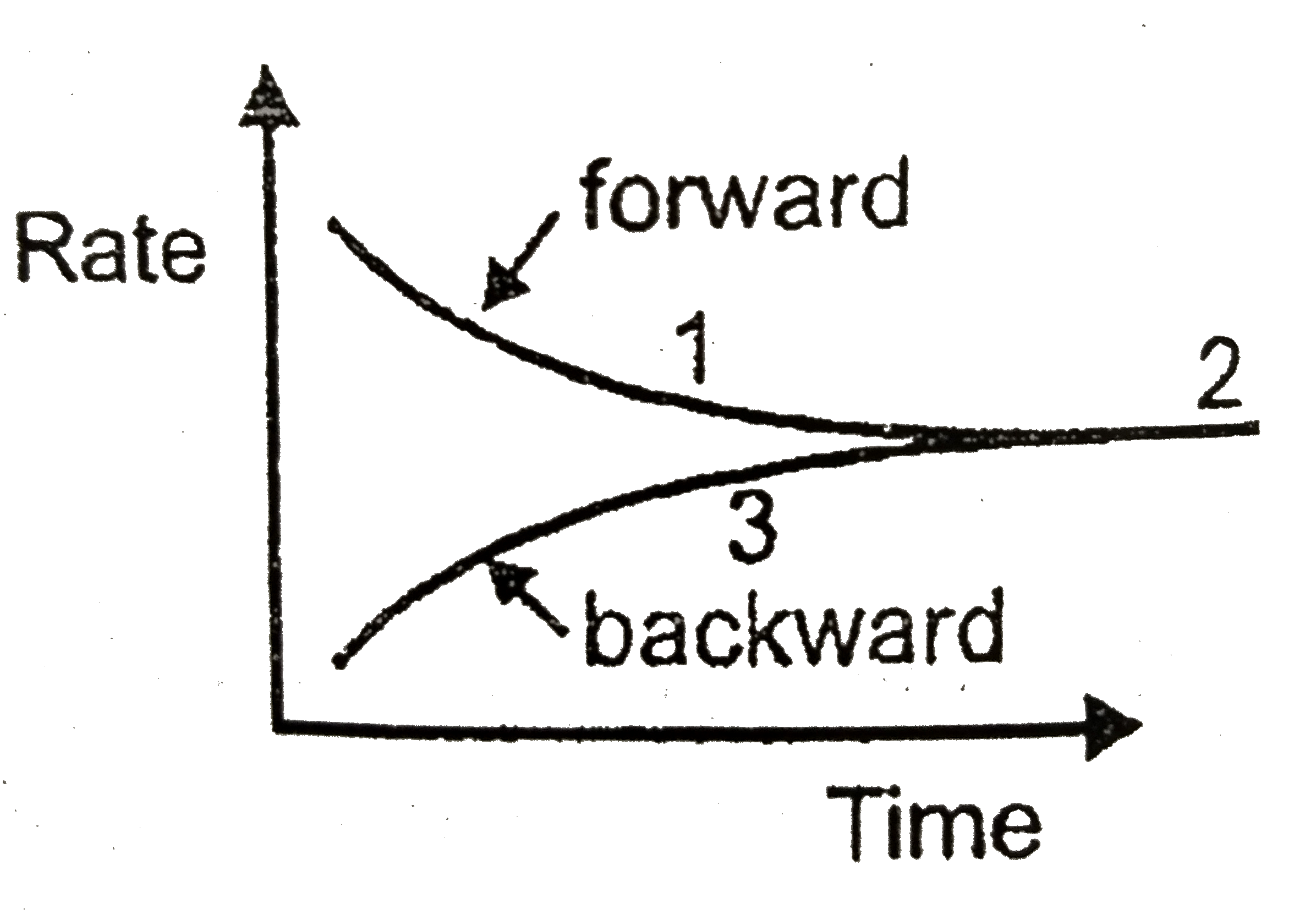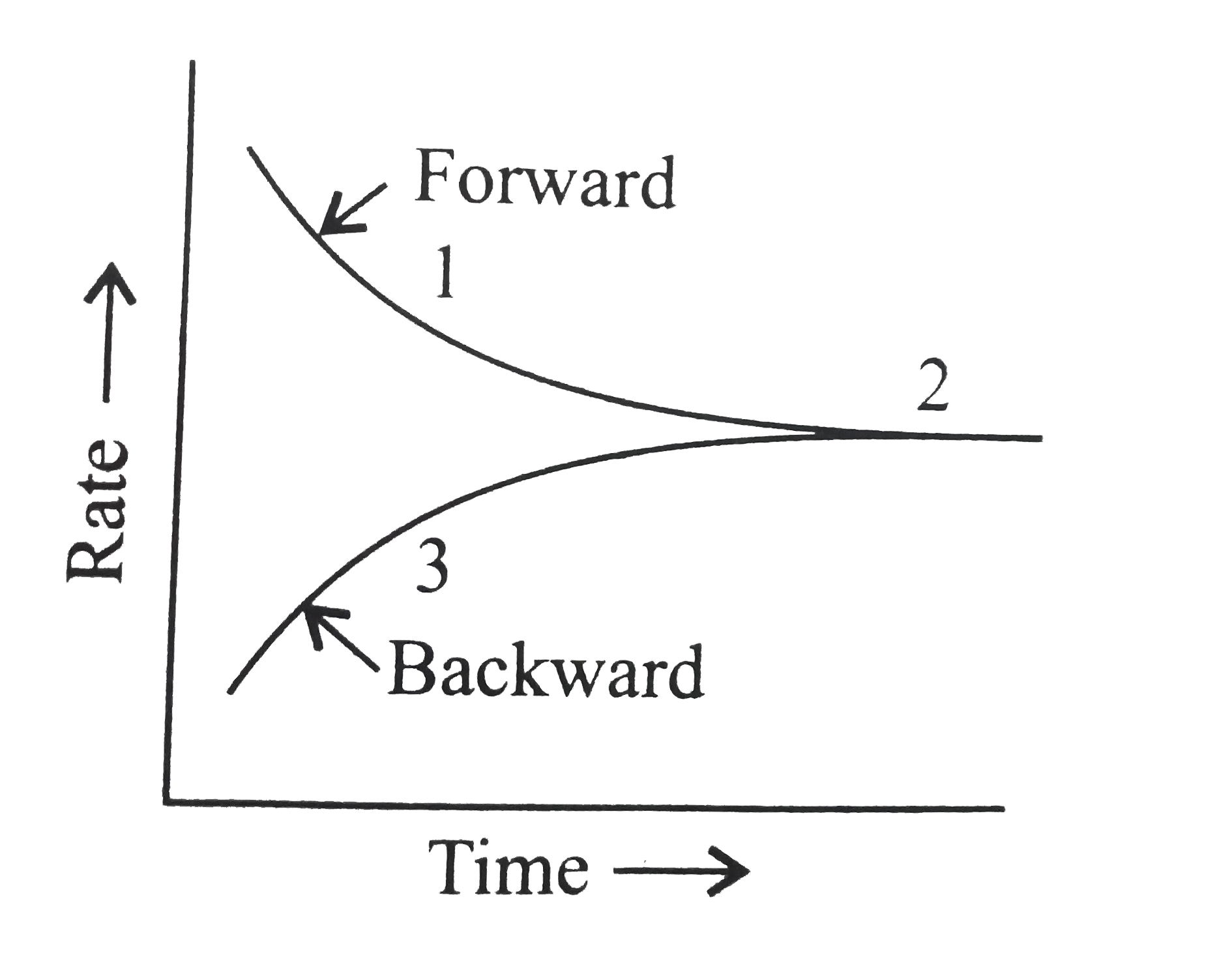In the reaction
PCl5(g)⇔PCi3(g)+Ci2(g)
a graph in plotted to show the variation of rate of forward and backward reactions against time. Which of the following is correc?

Q>KQ=KQ<K
321
123
231
213
The correct Answer is:A
Topper's Solved these Questions
- CHEMICAL EQUILIBRIUMBook:RESONANCEChapter:CHEMICAL EQUILIBRIUMExercise:Advanced Level Problems (Part-2)(Section-1)
Explore 7 Videos
- CHEMICAL EQUILIBRIUMBook:RESONANCEChapter:CHEMICAL EQUILIBRIUMExercise:Advanced Level Problems (Part-2)(Section-2)
Explore 7 Videos
- CHEMICAL EQUILIBRIUMBook:RESONANCEChapter:CHEMICAL EQUILIBRIUMExercise:Exercise-3 (Part-2)
Explore 17 Videos
- CHEMICAL BONDINGBook:RESONANCEChapter:CHEMICAL BONDINGExercise:Inorganic chemistry (Chemistry Bonding)
Explore 49 Videos
- D & F-BLOCK ELEMENTS & THEIR IMPORTANT COMPOUNDS Book:RESONANCEChapter:D & F-BLOCK ELEMENTS & THEIR IMPORTANT COMPOUNDS Exercise:Match the column
Explore 1 Video
Similar Questions
In the reaction
PCl5(g)⇔PCl3(g)+Cl2(g)
a graph in plotted to show the variation of rate of forward and backward
reactions against time. Which of the following is correct?

Q>K Q=K Q<K
View SolutionMass action rato or reaction quotient Q for a reaction can be calculate using the law of masss action
A(g)+B(g)⇔C(g)+D(g)
Q=[C][D][A][B]
The value of Q decides whether the reaction is at equilibrium or not.
At equilibrium, Q=K
For an equilibrium process, Q≠K
when Q>K, reaction will favour backward direction and when Q<K, it will favour direction.
Answer the following questions:
In the reaction:
NH4Cl(g)⇔NH3(g)+HCl(g)
a graph is plotted to show that the variation or the rate of forward and backward reaction against time.
Which of following is correct?

View Solution
Knowledge Check
Mass action rato or reaction quotient Q for a reaction can be calculate using the law of masss action
A(g)+B(g)⇔C(g)+D(g)
Q=[C][D][A][B]
The value of Q decides whether the reaction is at equilibrium or not.
At equilibrium, Q=K
For an equilibrium process, Q≠K
when Q>K, reaction will favour backward direction and when Q<K, it will favour direction.
Answer the following questions:
In the reaction:
NH4Cl(g)⇔NH3(g)+HCl(g)
a graph is plotted to show that the variation or the rate of forward and backward reaction against time.
Which of following is correct?
 AQ>K=3,Q=K=2,Q<K=1BQ>K=2,Q=K=3,Q<K=1CQ>K=1,Q=K=2,Q<K=3DQ>K=2,Q=K=1,Q<K=3
AQ>K=3,Q=K=2,Q<K=1BQ>K=2,Q=K=3,Q<K=1CQ>K=1,Q=K=2,Q<K=3DQ>K=2,Q=K=1,Q<K=3In the reaction :
NH4CI(g)⇔NH3(g)+HCI(g)
A graph is plotted to show that the variation of the rate of forward and backward reaction against time. Which match is correct ?
 AQ>KQ=KQ<K321BQ>KQ=KQ<K231CQ>KQ=KQ<K123DQ>KQ=KQ<K213
AQ>KQ=KQ<K321BQ>KQ=KQ<K231CQ>KQ=KQ<K123DQ>KQ=KQ<K213For the reaction, PCl5(g)→PCl3(g)+Cl2(g)
AΔH=ΔEBΔH>ΔECΔH<ΔEDnone of these

